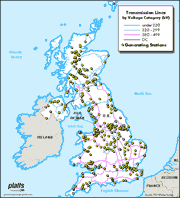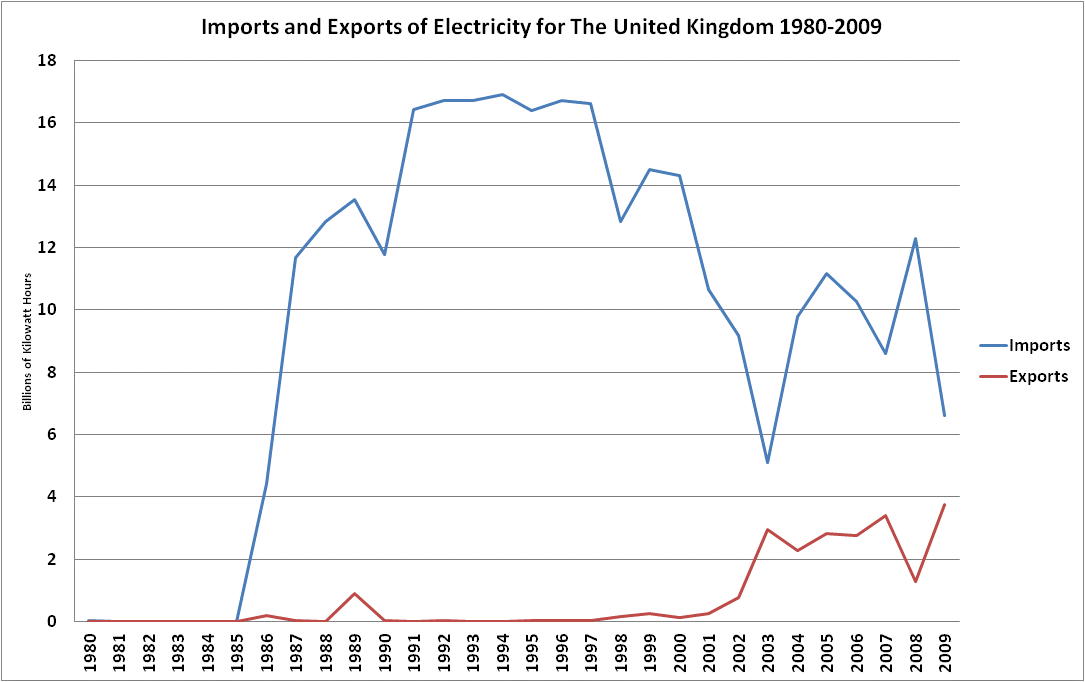National Energy Grid
|
 |
|
Full Size Map National Electricity Transmission Grid of United Kingdom(27 kb) |
GRID SUMMARY
The United Kingdom has 72.4 million kilowatts of installed electric capacity, about 80% of which is thermal, 18% nuclear, and 2% hydropower. The country generated 355.8 billion kilowatt hours (bkwh) of electricity in 2000, making it the third-largest electricity market in Europe (behind Germany and France). In 2001, only 37.2% of UK electricity was coal-fired. The remainder was accounted for by natural gas (31.5%), and primary electricity sources such as nuclear and hydroelectricity (25.8%).
More information about the national grid of the United Kingdom, including a national electricity distributed generation grid map (page 12), can be found in the pdf document here (267 kb).
Renewable EnergyWith introduction of the Climate Change Levy in 2001, and its exemption for renewable energy resources like solar and wind, renewable sources of energy are beginning to gain more attention. The United Kingdom hopes to increase the share of electricity generated by renewables from 3% in 2001 to 10% by 2010. This effort was recently bolstered by the Industry and Energy Minister's announcement in July 2001 of "a new deal for hydro" that will include a 10-20 megawatt (MW) increase in output that is expected to result from the refurbishment of 30 hydroelectric powerstations.
Additionally, the British government is investing over $364 million over the next three years into renewable energy sources including solar, biomass and wind. The UK now has 1000 wind turbines operating throughout the country and offshore, providing 555 MW of electricity. Over the next two years, the UK hopes to add an additional 400MW generation capacity, and to have 15% of its electricity generated through (mostly offshore) wind turbines by 2020.
The Non-Fossil Fuel Obligation (NFFO), created by the Electricity Act of 1989, is the primary piece of legislation providing a premium-price, market-enabling mechanism which attempts to encourage renewable-based electricity generation. Under the NFFO system, the difference between the premium price paid to "green" electricity suppliers and the market price is financed by the Fossil Fuel Levy, a tax paid by licensed electricity suppliers and ultimately passed on to consumers.
The New Electricity Trading Arrangements (NETA) are currently being discussed and attempt to address new ways of ensuring that generators fuelled by "green power" can be competitive in the market. Discussions center around examining network access and charging arrangements to ensure that both combined heat and power and renewable energy sources have fair access to the distribution network at competitive prices.
